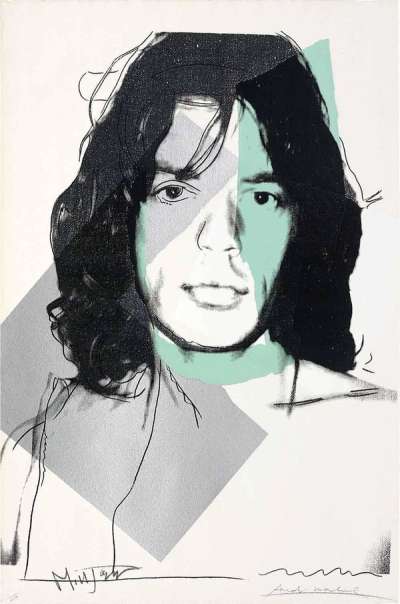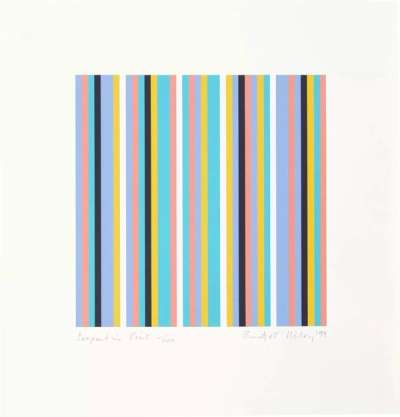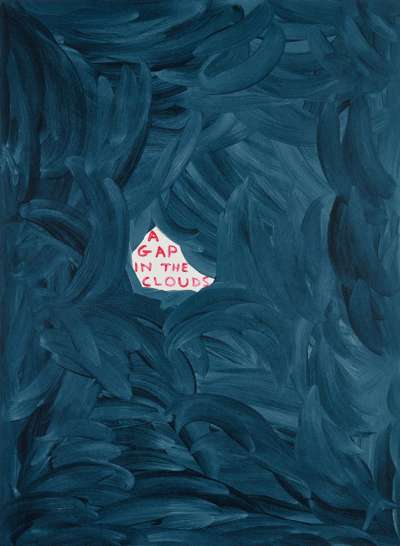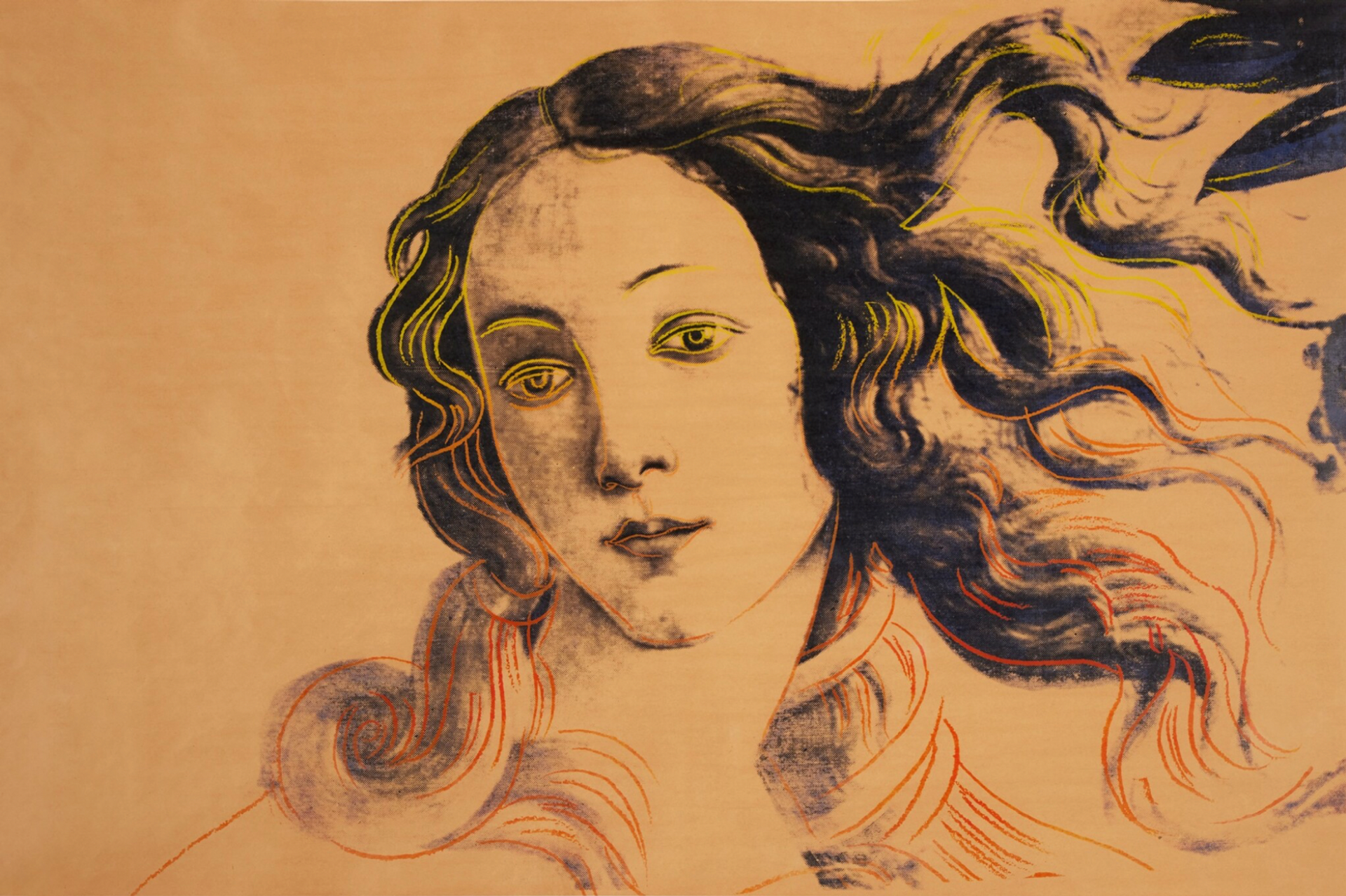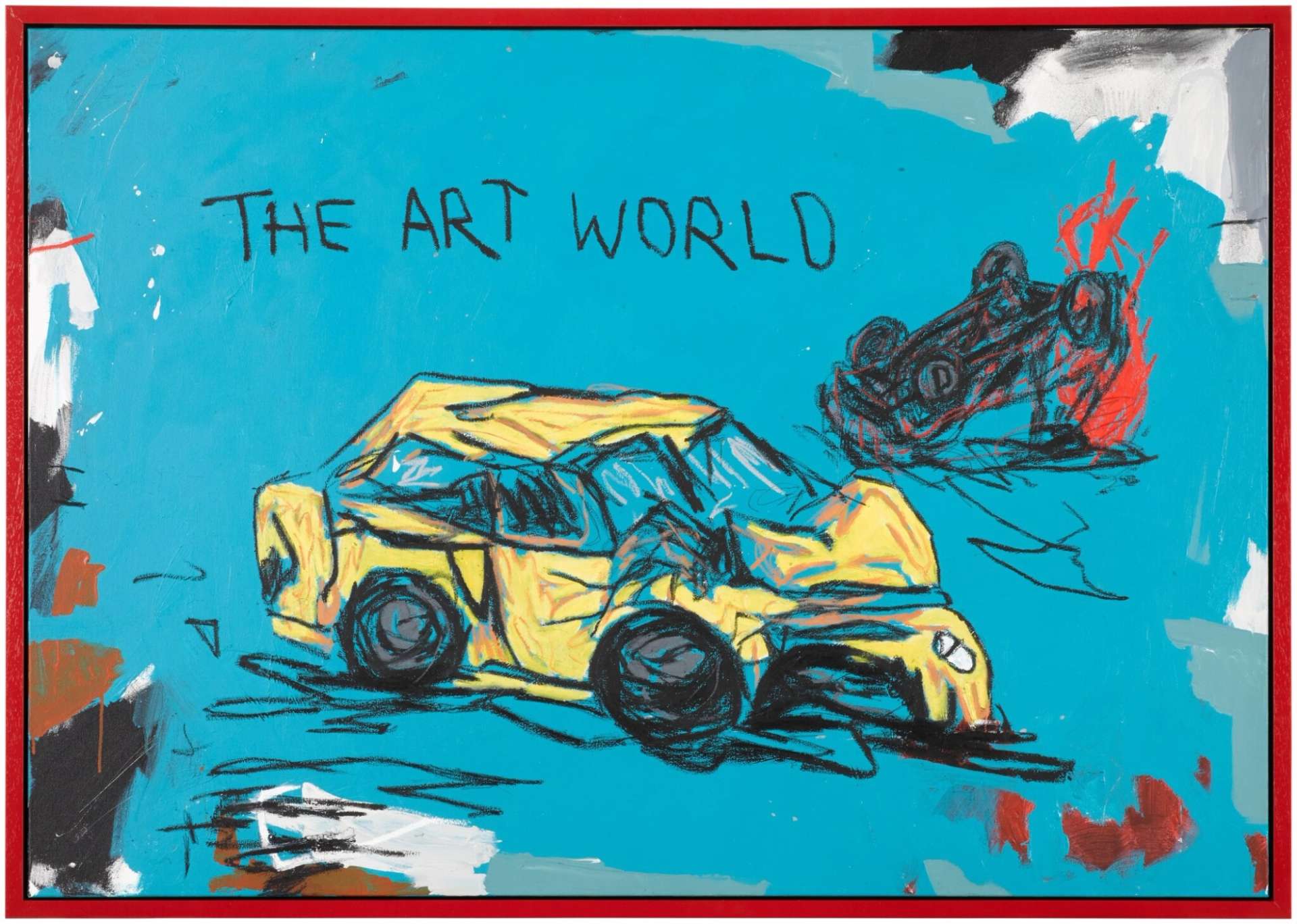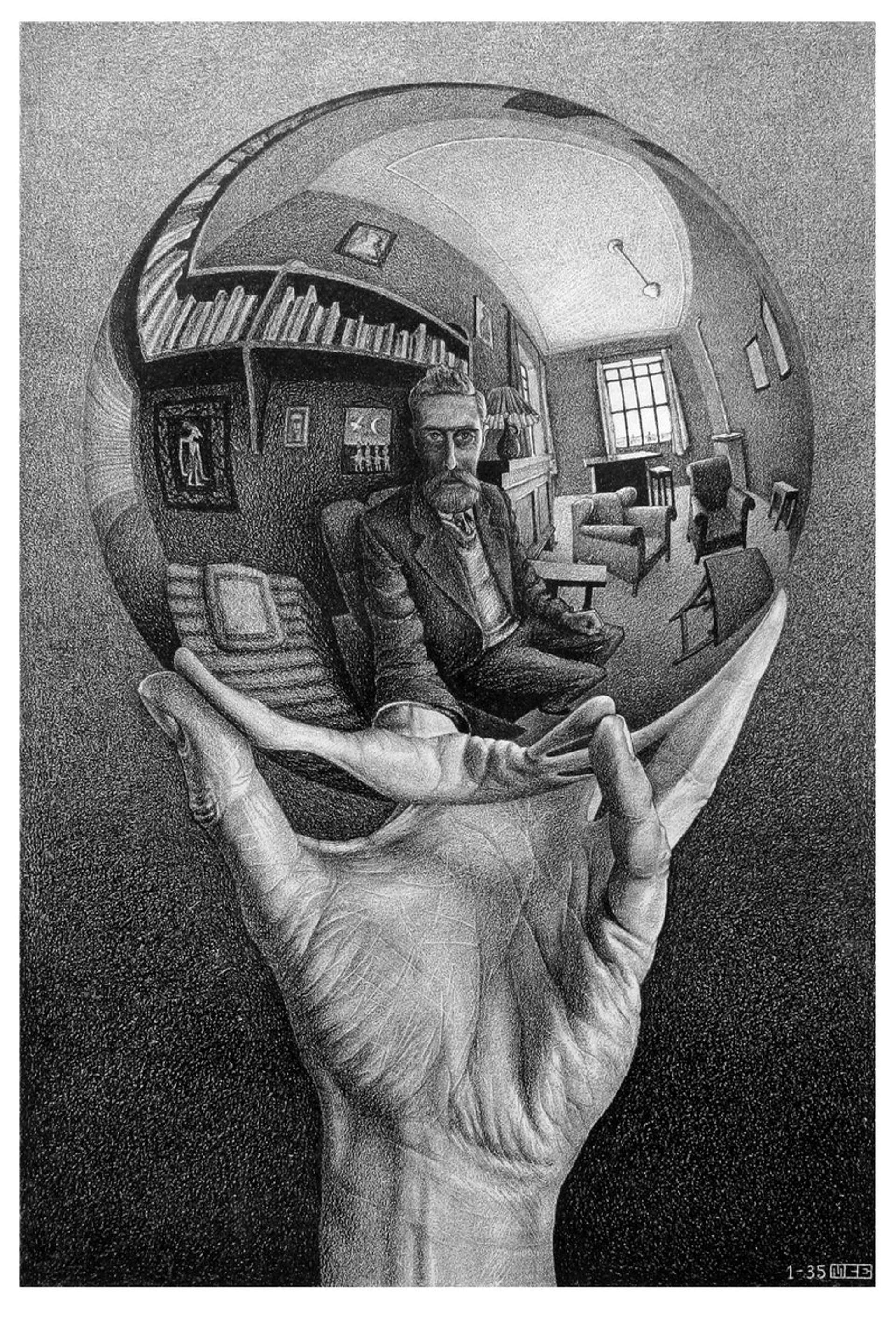 Hand with Reflecting Sphere © MC Escher, 1935
Hand with Reflecting Sphere © MC Escher, 1935With the above perfectly encapsulating his unique artistic perspective, Maurits Cornelis Escher, better known as M.C. Escher, was a Dutch graphic artist known for his intricate and mind-bending optical illusions that often defied the laws of physics.
Delving into the mind-bending world of M.C. Escher's most famous artworks, we explore the mathematical precision and surrealism that he infused into each piece and provide unique perspectives on the complexities of his work.
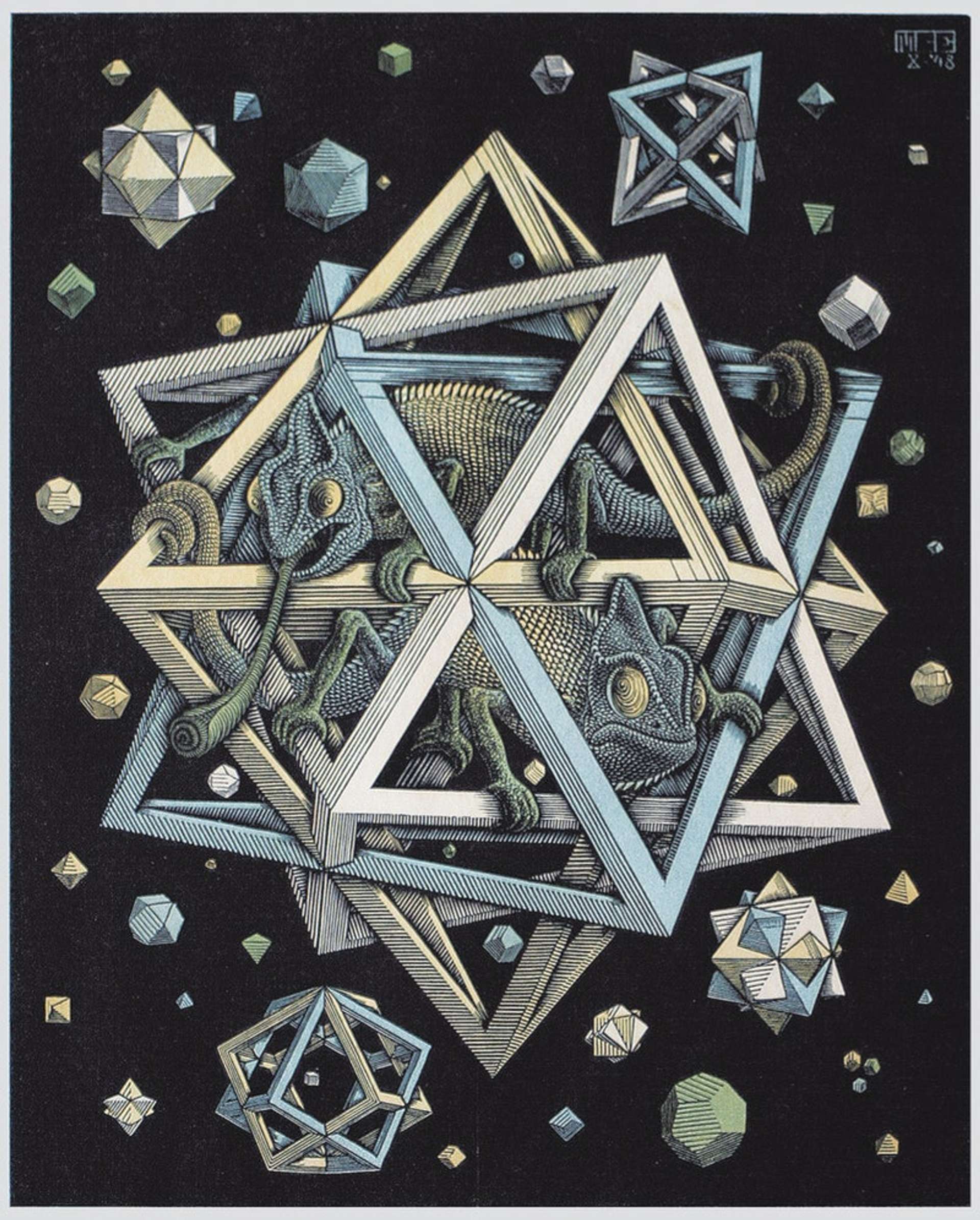 Stars © MC Escher, 1948
Stars © MC Escher, 1948The Fascinating World of M.C. Escher
Arguably one of the most important artists of the 20th century, Escher's works have captivated audiences for decades. He was renowned for his use of intricate patterns and optical illusions in his art, which often involved mathematical and scientific concepts.
Escher's work has had a significant impact on popular culture, influencing everything from album covers to movie posters. One of his most famous works, Relativity, has been referenced in numerous films, including Labyrinth and Inception. He has also influenced science, with his artwork inspiring concepts in fields such as crystallography and topology.
Escher's artwork is full of complex patterns and optical illusions, which can be seen in his most famous works such as Drawing Hands and Sky And Water I. His prints are in high demand with collectors willing to pay top dollar for his work as seen at Sotheby's New York in 2022 where Day And Night realised a price of $94,500.
Like most once-in-a-gen geniuses, Escher struggled to gain recognition during his lifetime, but his work has since become highly regarded and celebrated by art enthusiasts and mathematicians alike. Escher's legacy will undoubtedly continue to inspire and intrigue generations to come.
Exploring Escher's Most Famous Works
Some of the most iconic and recognisable in modern art history, each piece of Escher's presents a unique and intricate exploration of mathematical concepts and optical illusions, and the following works are among his most renowned and impressive:
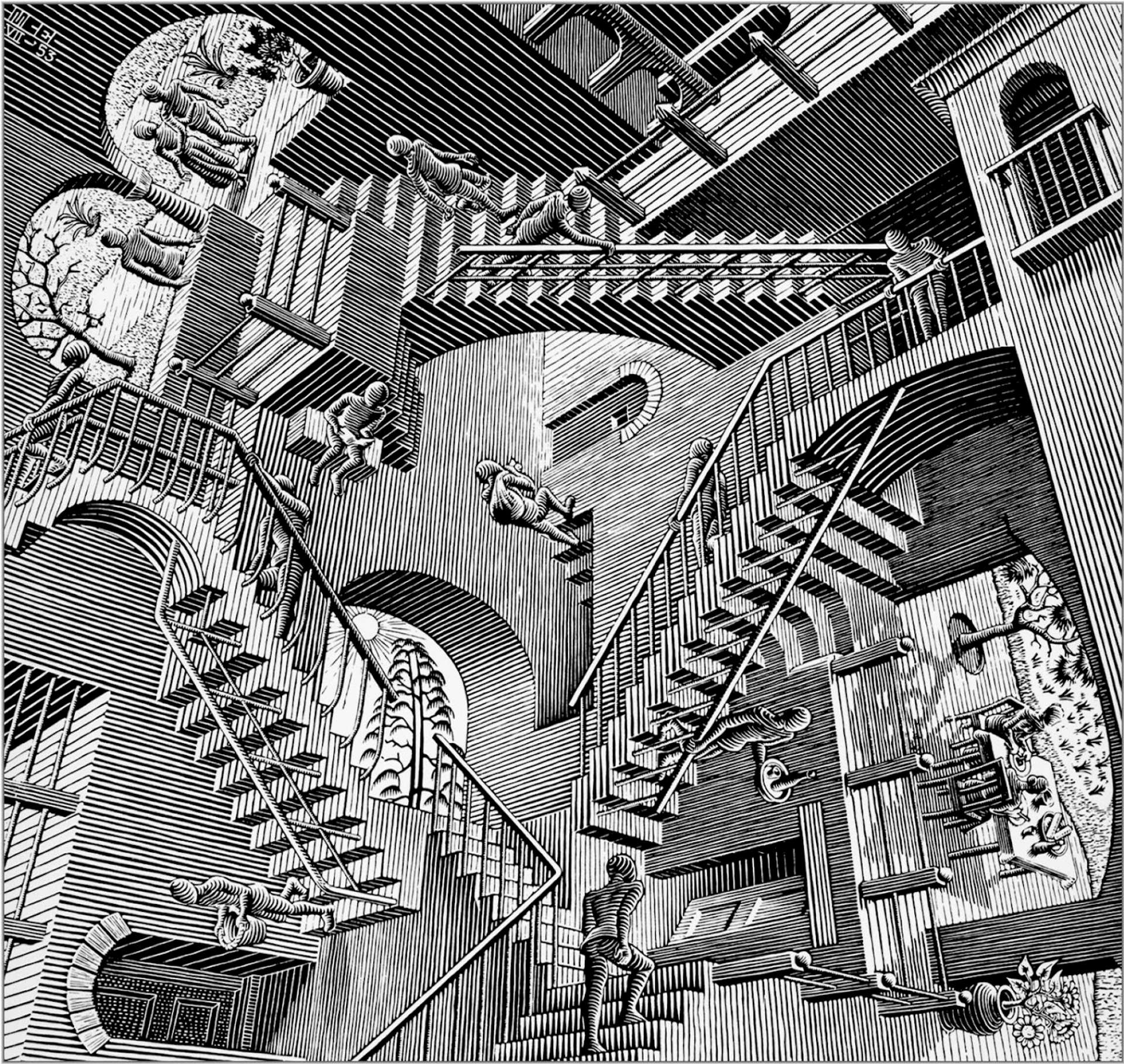 Relativity © MC Escher, 1953
Relativity © MC Escher, 1953Relativity (1953)
Relativity is one of Escher's most striking works, showcasing a complex network of staircases and architectural elements that defy gravity and challenge the viewer's perception of space. The work is a prime example of Escher's mastery of impossible constructions, seamlessly weaving together various perspectives to create a mind-bending visual puzzle.
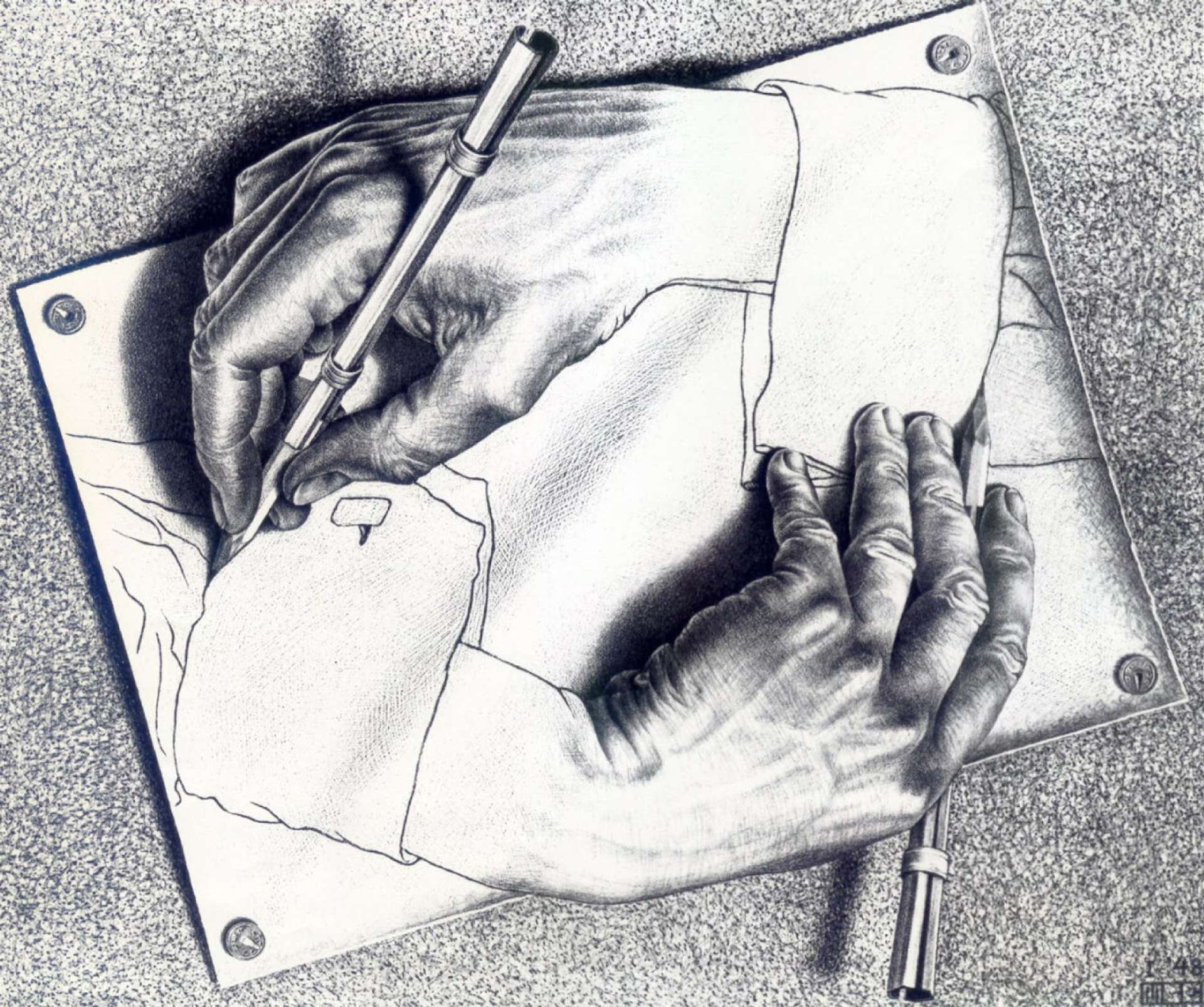 Drawing Hands © MC Escher 1948
Drawing Hands © MC Escher 1948Drawing Hands (1948)
Drawing Hands depicts a pair of hands that appear to be drawing one another. The work explores the idea of infinite recursion, where each hand is simultaneously the drawer and the drawn, creating a self-referential paradox that speaks to the nature of creation and artistic expression.
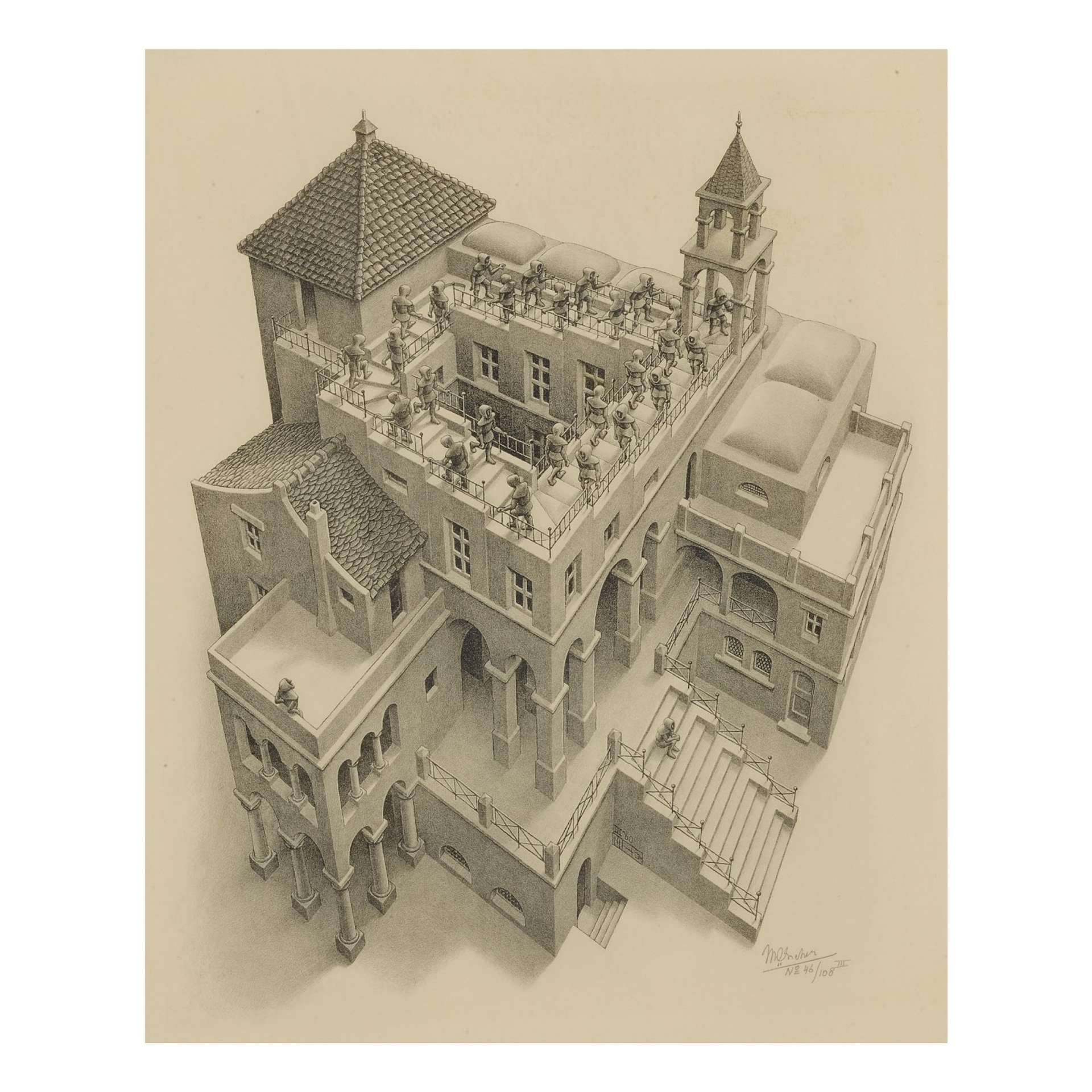 Image © Sotheby's / Ascending And Descending © MC Escher, 1960
Image © Sotheby's / Ascending And Descending © MC Escher, 1960Ascending And Descending (1960)
Ascending And Descending is a fascinating piece that features a group of figures walking up and down a staircase that seems to lead nowhere. Escher's use of impossible constructions and shifting perspectives create an unsettling feeling of vertigo in the viewer, drawing attention to the limits of human perception and the subjective nature of reality.
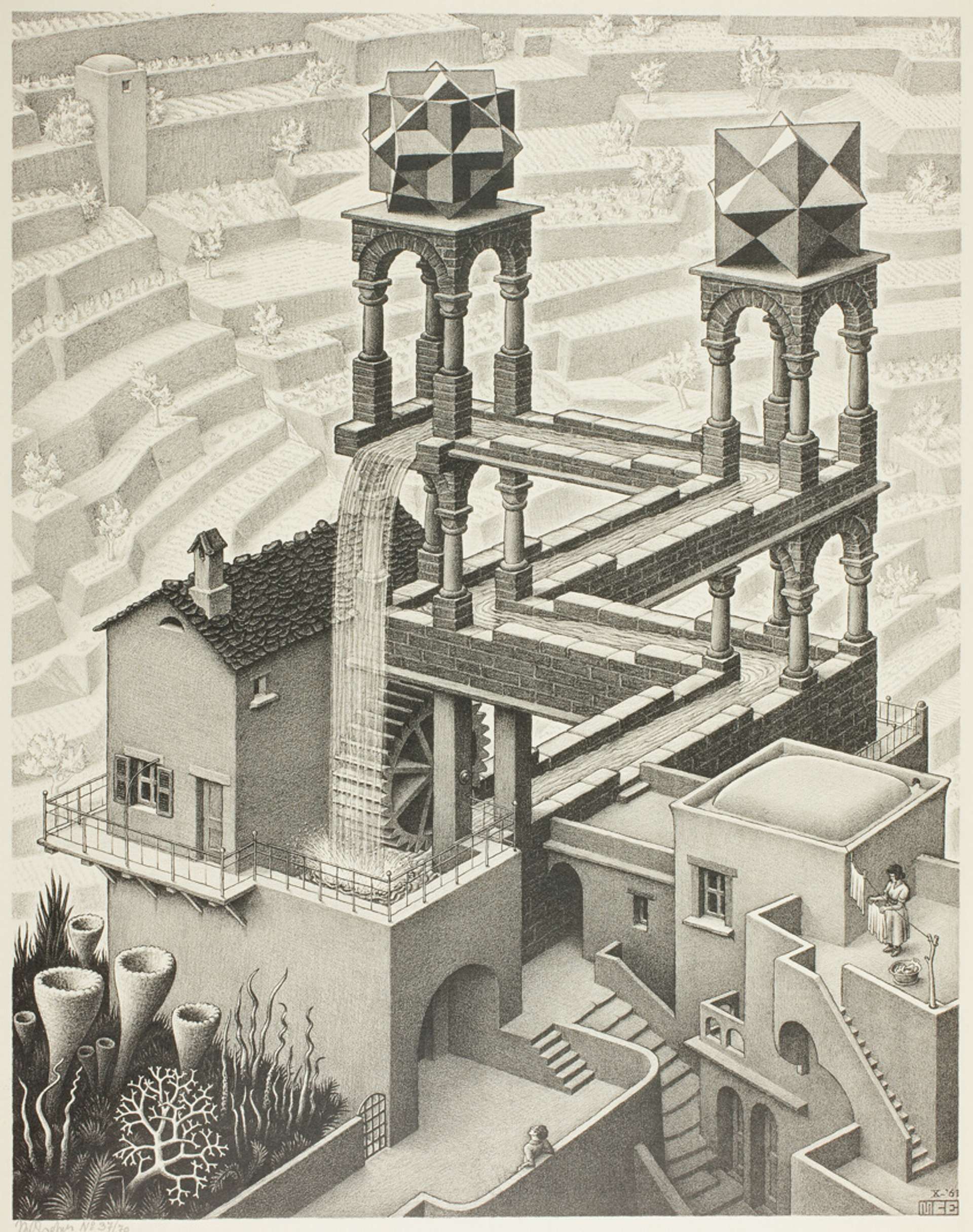 Waterfall © MC Escher 1961
Waterfall © MC Escher 1961Waterfall (1961)
Waterfall is a stunning visual representation of the concept of perpetual motion, depicting a never-ending cascade of water that flows uphill and back into itself. The piece combines elements of mathematics, physics, and art to create a seamless illusion of movement and transformation, inviting the viewer to contemplate the nature of change and the eternal cycle of life.
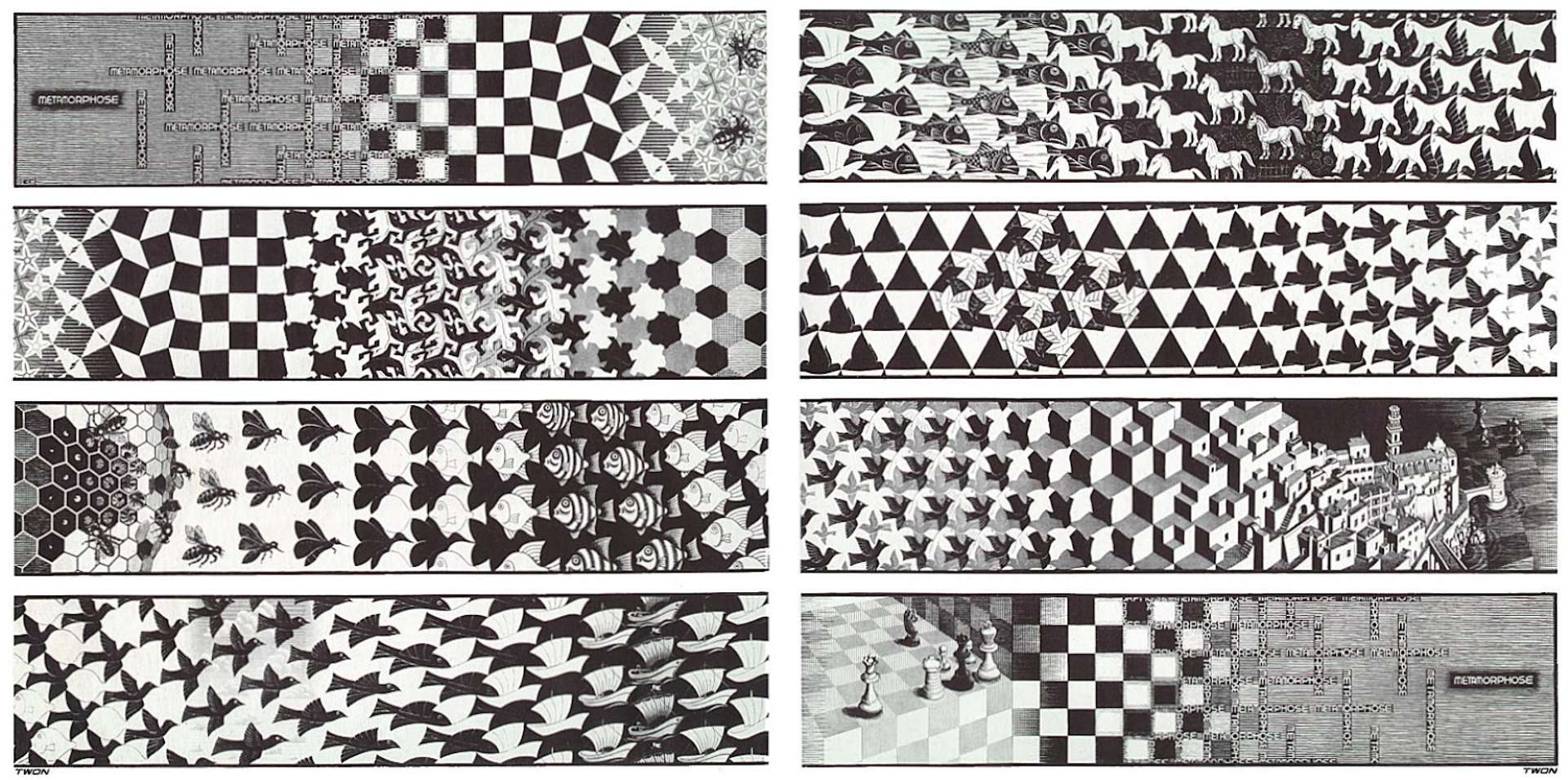 Metamorphosis III © MC Escher, 1968
Metamorphosis III © MC Escher, 1968Metamorphosis (1939 - 1940)
Metamorphosis is a series of woodcuts that depicts a gradual transformation from one image to another, showcasing Escher's fascination with the idea of metamorphosis and transformation. The work features a range of subjects, from animals and insects to geometric shapes and architectural elements, each morphing into the next with seamless fluidity.
Blending mathematical precision with artistic vision, Escher's techniques and concepts were innovative in the Op Art world. By creating works that challenge the viewer's understanding of reality through impossible constructions and shifting perspective, Escher is inviting us to question the limits of human perception, and to embrace the subjective nature of our experience.
Each of Escher's works is also deeply rooted in its cultural and historical context, reflecting the artistic and intellectual trends of his time while also pushing the boundaries of what was considered acceptable in the art world. His art has inspired countless artists and thinkers over the years, and his legacy continues to shape the way we understand and appreciate modern art.
Exploring Echer’s Lesser Known Works
While M.C. Escher's most famous works like Relativity and Drawing Hands are undoubtedly masterpieces, his lesser-known pieces are equally impressive. Here are three of his works that may not receive the same recognition but are still significant to his oeuvre.
 Image © National Gallery Of Art / Convex And Concave © MC Escher, 1955
Image © National Gallery Of Art / Convex And Concave © MC Escher, 1955Convex And Concave (1955)
This lithograph features a large concave cube made up of smaller cubes, with a smaller convex cube on the inside. The optical illusion created by the use of positive and negative space challenges the viewer's perception of depth. Escher's meticulous attention to detail in creating this piece demonstrates his skill as a draftsman and his fascination with geometric shapes.
 Image © National Gallery Of Art / Day And Night © MC Escher 1938
Image © National Gallery Of Art / Day And Night © MC Escher 1938Day and Night (1938)
This woodcut print shows two flocks of birds in a landscape that transforms from day to night as the viewer's eyes move from left to right. The use of contrasting black and white creates a stark contrast between light and dark, and the birds' flight patterns create an illusion of movement and energy. This piece showcases Escher's ability to create intricate and dynamic compositions.
 Image © Sotheby's / Metamorphosis II © MC Escher, 1940
Image © Sotheby's / Metamorphosis II © MC Escher, 1940Metamorphosis II (1940)
Whilst Metamorphosis is one of Escher's most famous works, Metamorphosis II is a lesser-known follow-up that is equally impressive. This woodcut print features a continuous transformation of 20 different images, starting with a simple motif of a snail and ending with a complex pattern of butterflies. The intricate details and smooth transitions between each image create a sense of fluidity and motion that is characteristic of Escher's work.
These works demonstrate Escher's ability to create complex compositions using mathematical principles and his fascination with optical illusions. While they may not be as well-known as some of his more famous pieces, they are still significant contributions to the world of art.
 Image © Sotheby's / Reptiles (Bool 327) © M. C. Escher 1943
Image © Sotheby's / Reptiles (Bool 327) © M. C. Escher 1943The Legacy of M.C. Escher: How To Invest In A Work Of Genius
Escher is undoubtedly one of the most influential artists of the 20th century. His intricate and mind-bending prints are a testament to his unique vision, technical skill, and mathematical mind. Escher's work has inspired countless artists, mathematicians, and designers, and his legacy lives on through his timeless art.
Escher's art has also become a highly valuable commodity in the art market. His original prints and drawings can fetch a fortune at auctions, and his works are highly sought after by collectors and investors alike. The record price for the artist is at $756,000 for Reptiles (Bool 327), sold at Sotheby’s in 2022. However, valuing and investing in Escher's art can be a challenging task. It is crucial to understand the intricacies of the Escher market and to work with trusted art advisors and brokers to navigate the market.
MyArtBroker's MyPortfolio tool is an excellent resource for collectors looking to invest in Escher's art, allowing you to track the value of an Escher print in real time. The service provides personalised art investment advice and helps collectors build a diverse and profitable art portfolio.
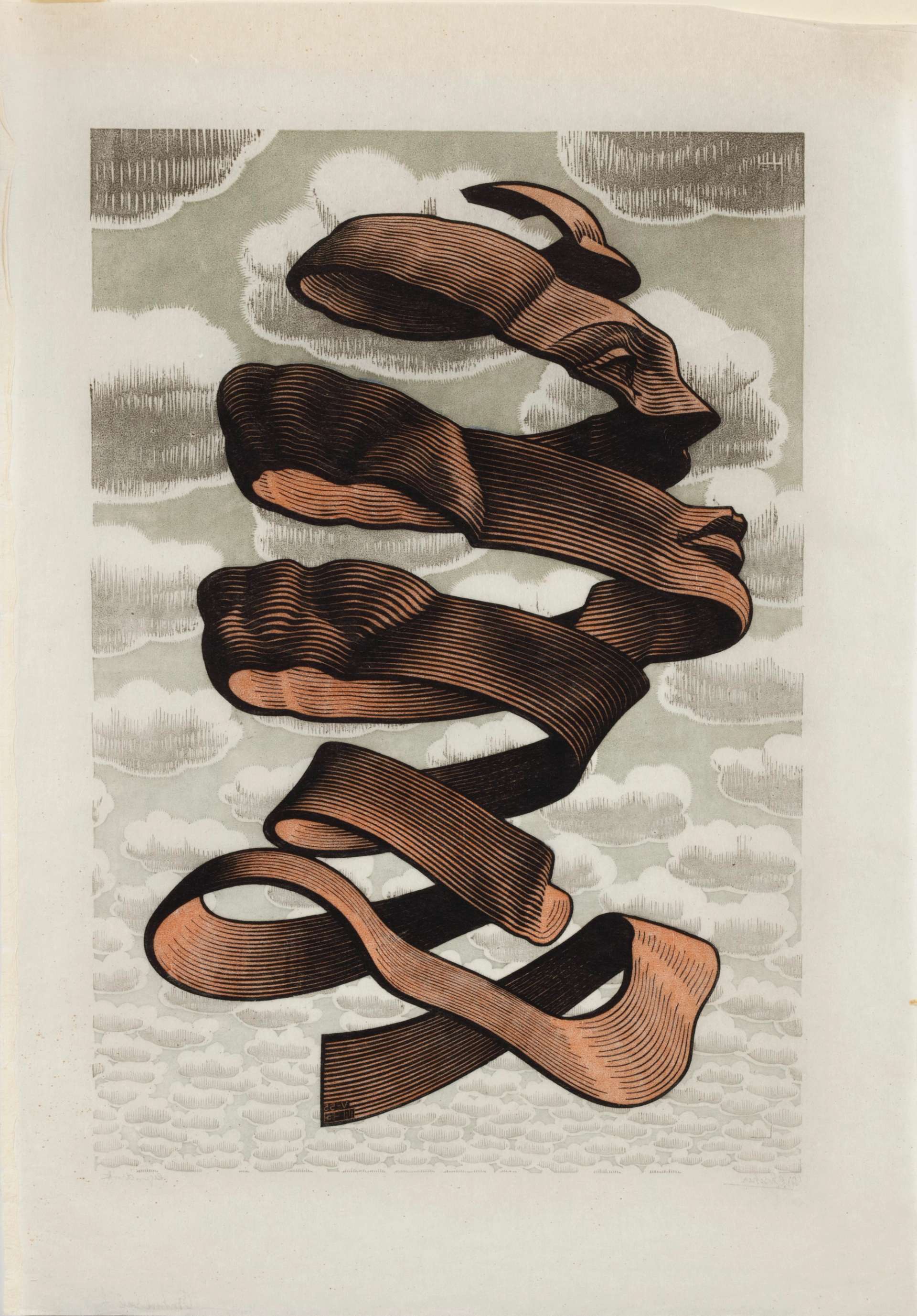 Image © Christie's / Rind © M. C. Escher 1955
Image © Christie's / Rind © M. C. Escher 1955Escher's art challenges and fascinates viewers worldwide, and his legacy remains a significant influence on contemporary art and design.
Escher's art can be found in many prominent museums, galleries, and auction houses worldwide. The Escher Museum in The Hague, Netherlands, holds a vast collection of his art and The National Gallery of Art in Washington, D.C., and the Museum of Modern Art in New York City are also notable institutions that feature Escher's art.
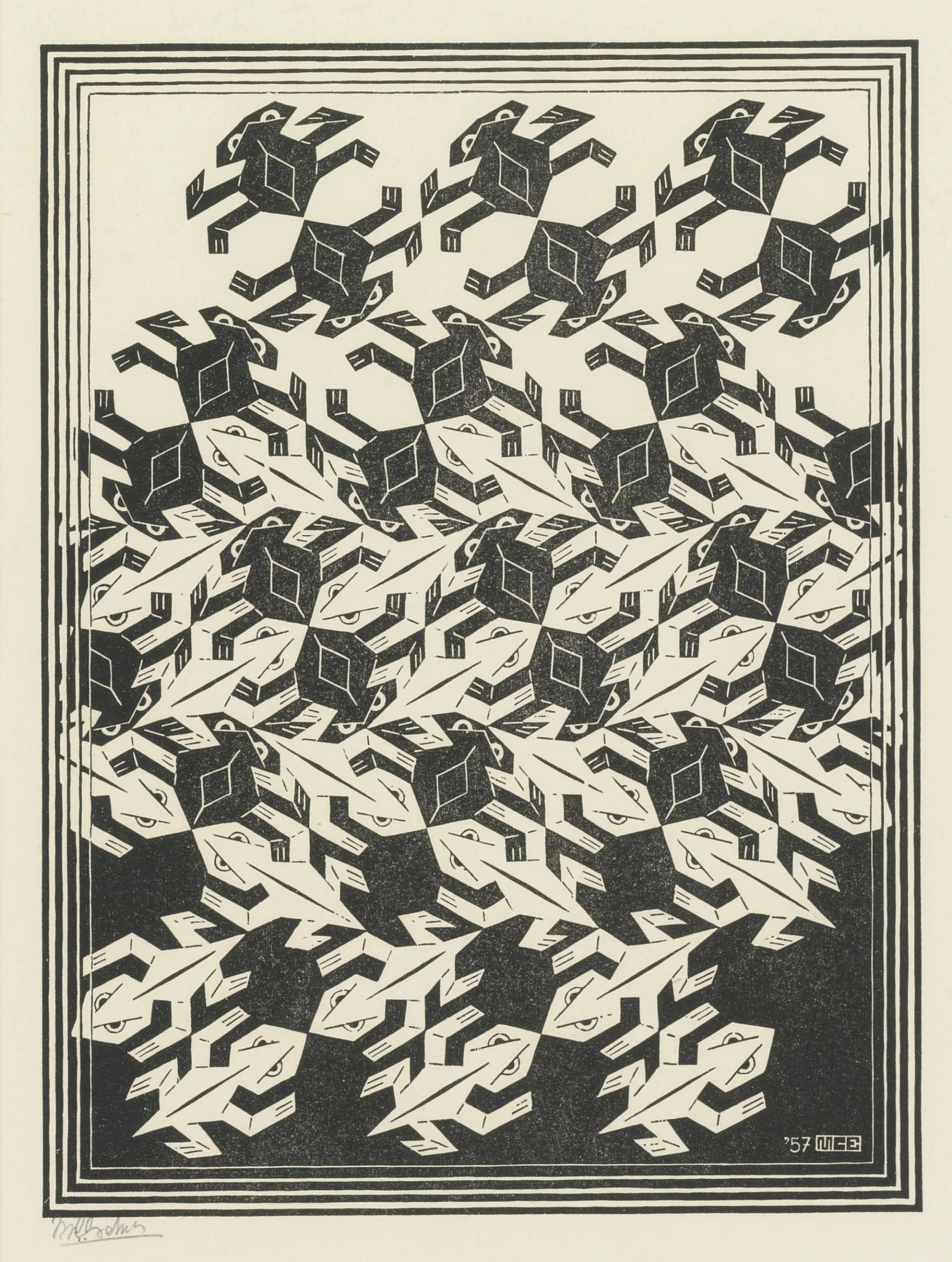 Image © Sotheby's / Regular Division Of The Plane V © M. C. Escher 1957
Image © Sotheby's / Regular Division Of The Plane V © M. C. Escher 1957The Endlessly Fascinating World of Escher: Answers to some Burning Questions
While each of Escher’s works is awe-inspiring, his most famous work, as mentioned, is Relativity, a lithograph depicting a complex architectural structure where people walk upside down and sideways.
He is best known for his ability to combine art and mathematics, creating impossible objects and mind-bending patterns that challenge the viewer's perception. His work explores the concepts of infinity, symmetry, and perspective, often blurring the lines between reality and imagination.
People often wonder what Escher’s most famous tessellation is, and while there may be more than one answer to that, his series Regular Division Of The Plane is arguably the most well-known. Created between 1936 and 1958, each print in this series depicts small interlocking images to create a flat plane.
M. C. Escher’s legacy can be witnessed in pop culture as well. His works have influenced numerous movies, including Labyrinth, The Matrix, and Inception. The Fall features a mesmerising scene that recreates Escher's Relativity with real actors and special effects. Doctor Strange and Interstellar also pay homage to Escher's ideas.
Escher's art continues to fascinate and inspire people around the world, showcasing the beauty and complexity of mathematical concepts in a visual form. His work reminds us of the power of imagination and the endless possibilities of art.



